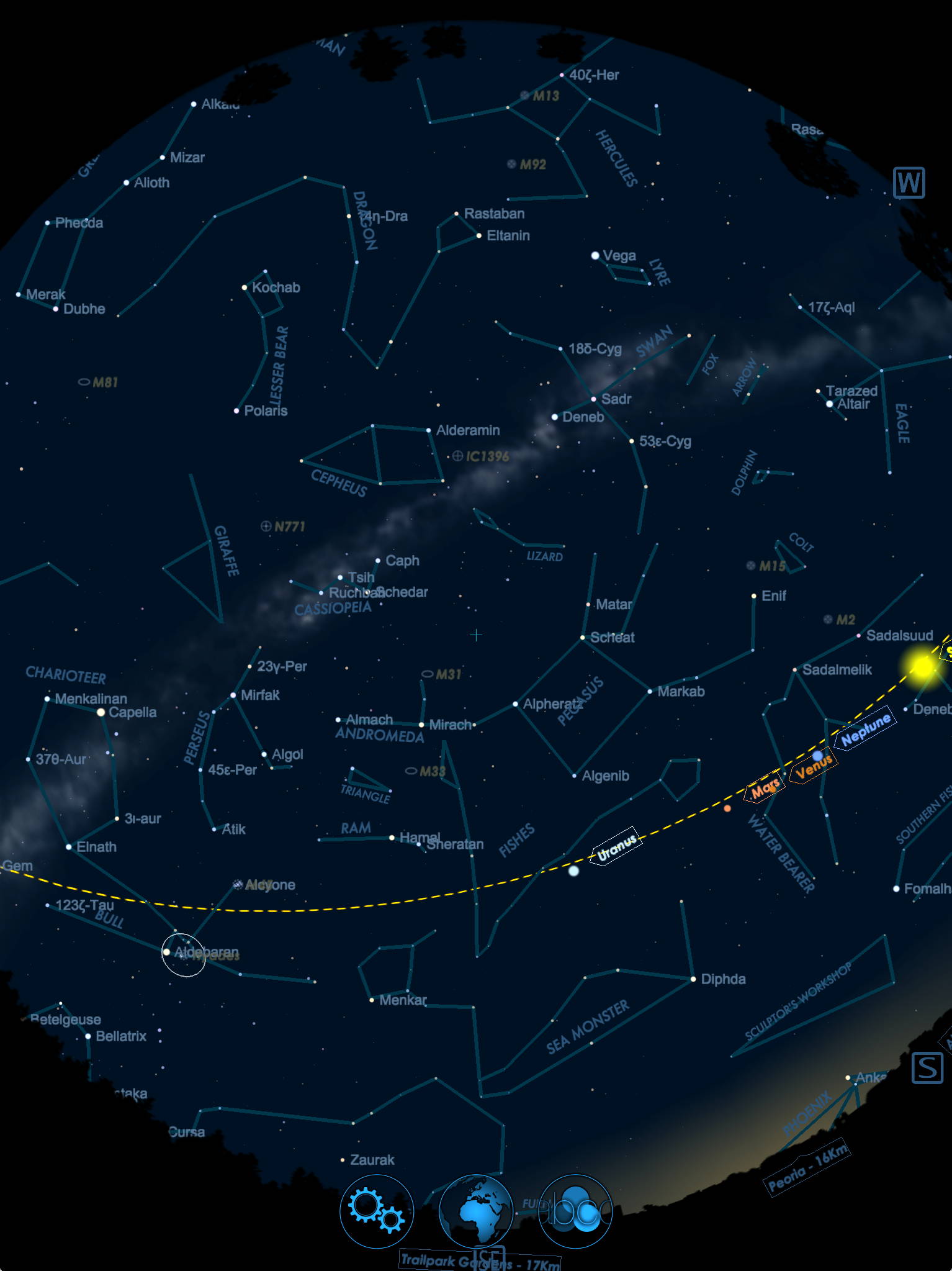
Tap on anything in the sky and get the facts on what you are looking at, including distance and brightness. Includes the complete Messier catalogue of 110 exotic deep sky objects. Displays all 88 constellations, with constellation imagery based on the beautiful artwork by 17th century astronomer Johannes Hevelius. Using the powerful Time Shift feature, simply tap the time button and smoothly shift up to 10,000 years forward or backward in time. Fly to and explore all the planets of the solar system, their moons and the sun all rendered in beautiful 3D with state of the art visual effects.

Accurately depicts all the visible stars of the northern and southern hemispheres - a total of approximately 120,000 stars! In a single app of less than 30MB, Star Chart dynamically scales its visuals and capabilities across all iOS devices to meet the high end capabilities of a retina display iPad while also running smoothly on the earliest iPhones and iPods. Alternatively, look around the sky using finger gestures – perfect for armchair astronomers! When you hold your device up to the sky, Star Chart will automatically start tracking your movements to match the sky *. Want to know where your star sign is in the sky? Star Chart will tell you all this and more. Want to know what the night sky looks like to people on the other side of the earth? Well just point your device down! Want to know what that bright star is called? Point your device* at it – you might just find out it’s a planet! Using state of the art GPS technology, an accurate 3D simulation of the visible universe, and a great deal of technical wizardry, Star Chart calculates – in real time - the current location of every star, planet and moon visible from Earth and shows you precisely where they are even in broad daylight! Look through the eyes of your iPhone or iPad* to see a high-tech window into the whole visible universe.Īll you have to do is point your AR enabled device* at the sky and Star Chart will tell you exactly what you are looking at. You can now have a virtual star chart in your pocket.
INTERACTIVE SKYCHART DOWNLOAD
If you found this American phonemic chart and its examples useful, please consider sharing it with your classroom or classmates.*** Star Chart is now FREE! *** The top educational & augmented reality astronomy app - download and find out why over 20 million people use Star Chart! On the other hand, other dictionaries may simplify /ɝ/ as /ɜr/, or /ɚ/ as /ər/. Some dictionaries may detail further, using this symbol in the middle of a word, but /ɚ/ at the end of a word (e.g.: “brother”).

This chart uses /ɝ/ (as in “purple” /ˈpɝpəl/ or “NURSE” /nɝs/) for the R-colored vowel. Many dictionaries simplify it as /r/ because it's easier to type. This chart uses the proper /ɹ/ symbol for the (prevocalic) R sound. As a learner, you may still want to know it exists and is pronounced as a stressed /ə/, i.e.: with more intensity and energy, longer.

This is consistent with how a dictionary such as CMU (and its 100K+ entries) handles it, or how the Kindle's dictionary ( The New Oxford American Dictionary) does it (e.g.: “someone” = /ˈsəmˌwən/) or how handles their transcriptions too.My point of view is that, from an American perspective, /ʌ/ can be construed as a mere /ˈə/, i.e.: a stressed schwa: This may be the most controversial choice for some teachers, who have long been taught that “a schwa can never be stressed.”

You will not find /ʌ/ (as in “dust” /dʌst/ or “STRUT” /stɹʌt/) in this chart. Here are some of the decisions that went into the making of this chart: /ʌ/ vs. To do a good job of it, I had to decide what to focus on and just what to include. (At times, it may even feel as if there are as many conventions as there as dictionaries!)Īs mentioned, the goal of this chart is to teach the sounds of American English. There are many ways to transcribe English into phonemic transcriptions and, because there are various schools of thought and traditions, not all linguists agree on how it should be done.


 0 kommentar(er)
0 kommentar(er)
